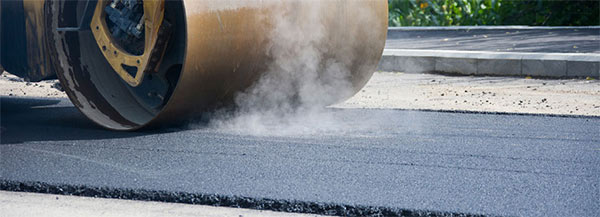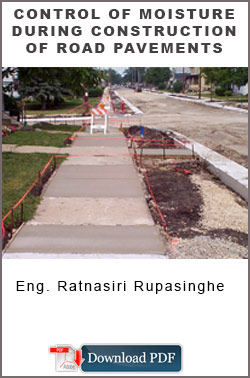| Control of Moisture during Construction of Road Pavements by Eng. Ratnasiri Rupasinghe |
| |
 |
| |
 |
|
Control of Moisture during Construction of Road Pavements (PREVENTS / MINIMISE EARLY PAVEMENT FAILIURES! EXTENDS DESIGN LIFE !)
With the increasing scarcity of locally available quality naturally occurring granular material and suitable rock sources for manufacturing aggregate base course material extensive research has been undertaken in Australia with most significant aspects to increase design life of pavements at reduced pavement depths.
Another key factor for this is to avoid huge environmental damages done by clearing natural vegetation during borrowing and harvesting materials.
|
|
2. Introduction
The current Engineering Road Note 9 Procedure for the Design of Road Pavements specify that the permanent deformation of flexible pavements must have a minimum design life of 40 years unless the Principal specify otherwise. This has been achieved making improvements to design concepts (Appropriate longitudinal slope, pavement height and drain depths etc), the quality of material (using high quality crushed rock base or improved material such as stabilised and hydrated cement treated crushed rock base), workmanship of construction works (maintaining camber from sub grade level, appropriate compaction and moisture control), quality control tests during construction (Improved test methods and use of test frequencies related to the lots with traceability from the resources to the finish products, rather to quantities.
2. Effect of Moisture
The stability of unbound pavement materials generally decreases with increasing moisture content or the Degree of Saturation (DOS). The DOS is a measure of the ratio of the volume of water to the combined volume of air voids and water within a material. A material with a DOS of 100% is fully saturated and has a very high pore pressure and high instability under load. As the DOS reduces, the reduction in pore water pressure also reduces with a corresponding increase in stability.
|
| |
| Download the Full Article |
| |
|
| Eng. Ratnasiri Rupasinghe |
| |
|
Eng. Ratnasiri Rupasinghe has worked with State Development and Construction Corporation, Road Development Authority, and Road Development Department, Northern Region in Sri Lanka on road and bridge projects nearly 13 years.
He also worked with Main Roads Western Australia over 17 years, and was instrumental in design & construction of over 200kms of National and State major highways involving construction of pavements using naturally occurring granular material, and manufactured crushed rock base (aggregate base course).
|
| |
|